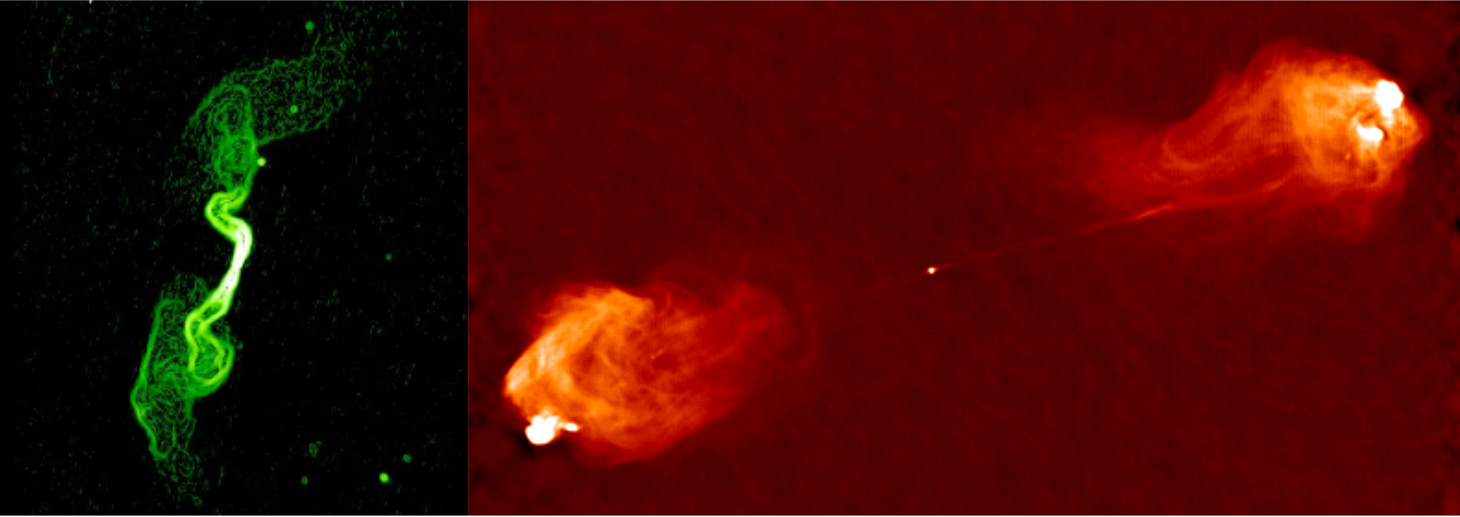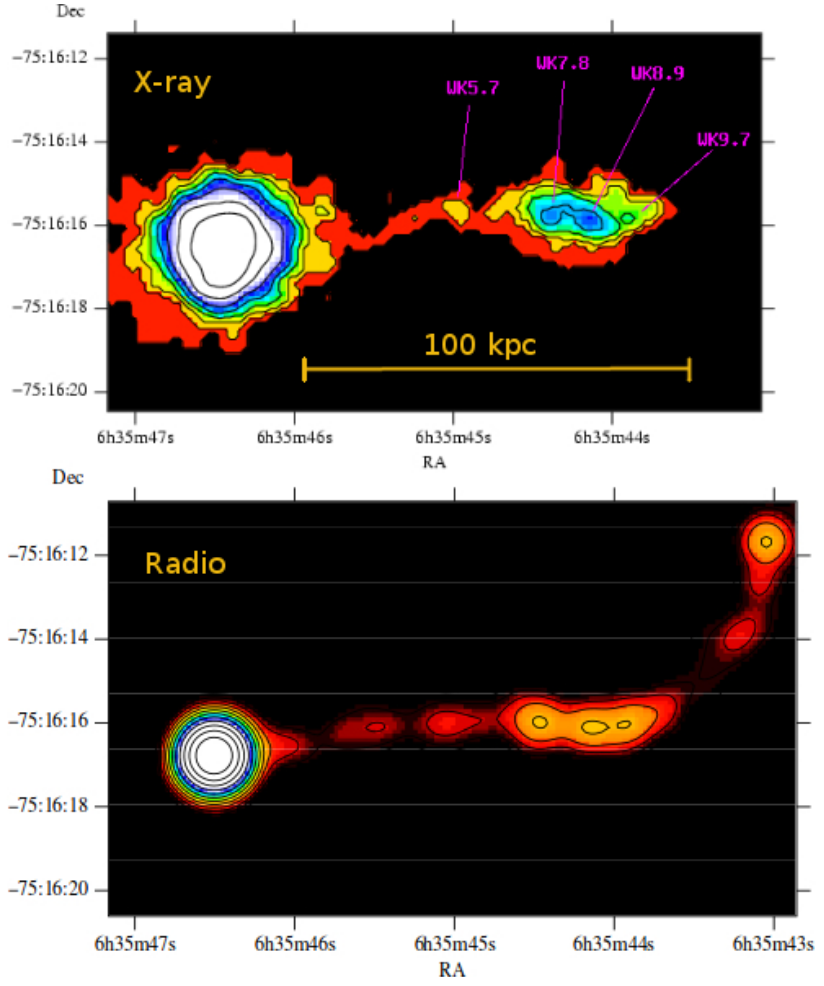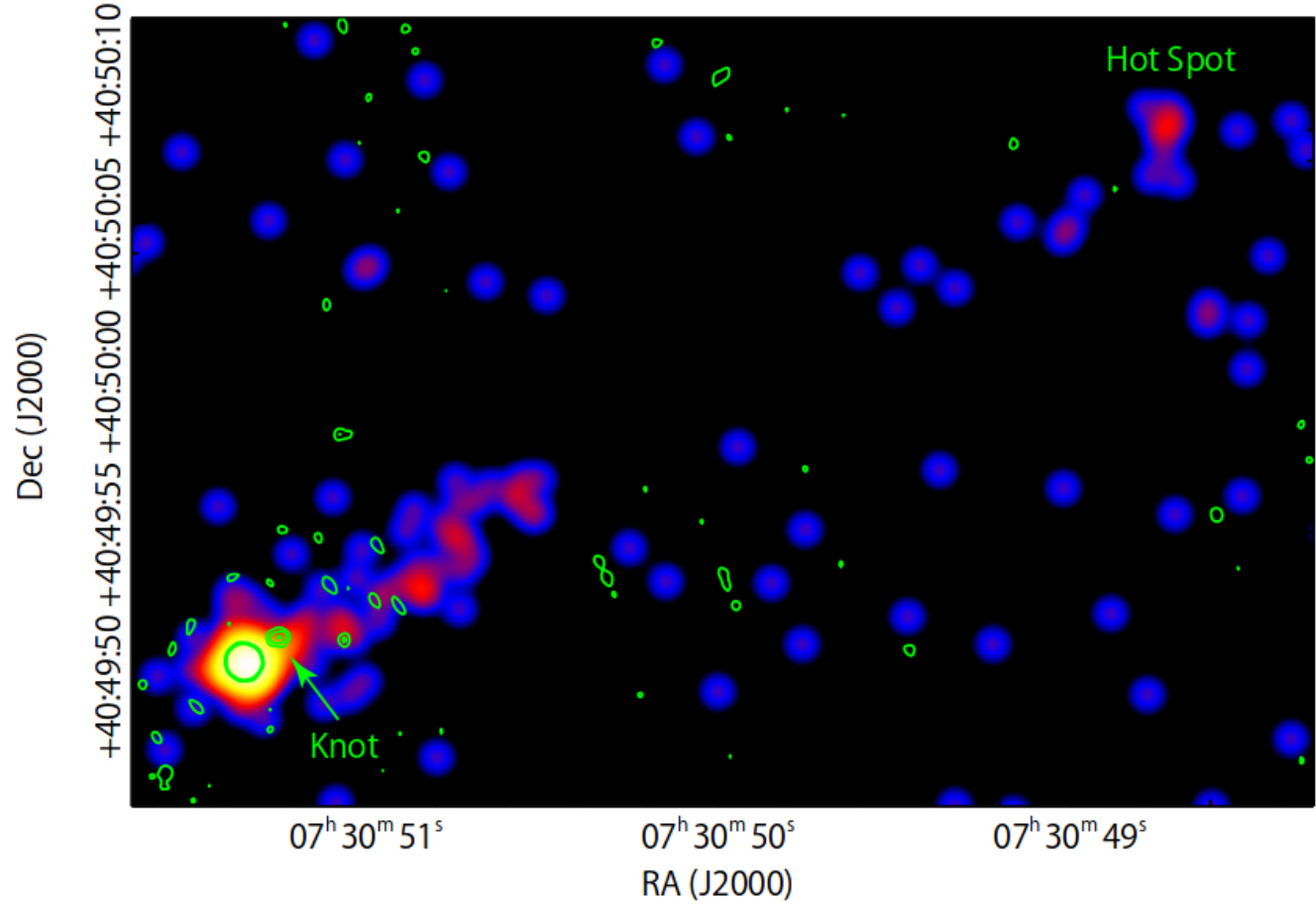In this post I thought I’d write a bit about my Master’s thesis, which eventually (thanks to a good bit of luck, as you will see) led to my very first paper.
During my master’s thesis I worked (together with Fabrizio Tavecchio and Gabriele Ghisellini at the Merate Observatory, near Milan) on understanding the properties of AGN jets on large scales – and by large, I mean hundreds of kiloparsecs or more, way beyond the edge of the galaxy hosting the central black hole. Historically, these sources have been observed in the radio frequency, and to this day they are generally referred to as “radio-loud AGN” – even though scientifically, it’s a somewhat incorrect and misleading definition. Radio maps of these objects look like this:

The source on the left is called an “FR 1” – Fanaroff/Riley type 1 – radio galaxy, the one on the second an “FR 2”. FR1s tend to be smaller, fainter and less powerful than FR2s, but we still don’t really understand exactly what’s driving the difference between the two types. Ever since the late 90s, the Chandra Space Observatory and its incredible imaging capability have opened a new way of looking at these jets – completely by accident. During the telescope’s commissioning phase the telescope was being pointed at a quasar by the charming name of PKS 0637-752. The idea was that, since quasars in X-rays were thought to be point sources, the data would give the NASA scientists and engineers a good feel for how well Chandra could see a point source. What they saw however was not a little blip in the X-rays, but this:

The image on top shows the X-ray data, the at the bottom below the radio. Beyond the central point source, there is X-ray emission extending for hundreds of kiloparsecs, and matching the radio emission almost perfectly! Since this first observation (published by Chartas et al. in 2000), about 100 such sources have been detected by Chandra. It was soon realized that for particularly powerful quasars like PKS 0637, most “sensible” radiative mechanisms would not be able to explain how a jet in the middle of nowhere (quite literally) could produce so many X-rays; the only somewhat reasonable idea was that the radio-emitting electrons in the jet were also giving some of their energy to photons of the Cosmic Microwave Background, turning them into the X-rays observed by Chandra. This has since been called the “IC/CMB” model – inverse Compton with the CMB. While the model has had its issues, and in some case it’s not quite as in vogue as it used to be, it makes one clear prediction – as you go further back in time, the Universe (and the CMB along with it) become more dense, thus these large scale jets should produce more and more X-rays.
What I realized during my thesis (almost by accident) is that taken to the extreme, this model predicts that the electrons in AGN jets will lose all their energy to the EC/CMB mechanism, before they can shine in the radio band. Instead, all the emission will go into X-rays. In other words, we expect far away jets of many “radio-loud” AGN to be “radio-silent”, but X-ray bright – completely turning around the convention that has held since the 60s, that jets mainly shine in radio! The reason nobody had seen any of these is simply that no one searched for them – there was no point in looking for jetted emission from radio-quiet sources….right? Well, that’s where my luck comes in. Literally the day after I realized this and produced a far away, radio-silent, X-ray bright jet with the code I was using at the time, Simionescu et al. published this image, taken during an observation completely unrelated to quasars:

The green contours show the radio data – all that’s showing is the emission very, very close to the central black hole, with next to nothing on the large, kpc scales as in PKS0637 or radio galaxies. The colors instead show the X-rays detected by Chandra – the jet is very clearly visible, and it extends for about 600 kpcs away from the central radio source. The quasar doing this is called B3 0727+409, and is located much farther away than your typical X-ray jet. It’s a perfect radio silent, X-ray bright, far away quasar jet! My model worked, and we had a convincing explanation ready for this new, puzzling source!To me, this makes B3 0727 the coolest quasar in the Universe, both literally (because our model says so), and figuratively, because it was nice enough to show up at just the right time for me to publish a paper!


